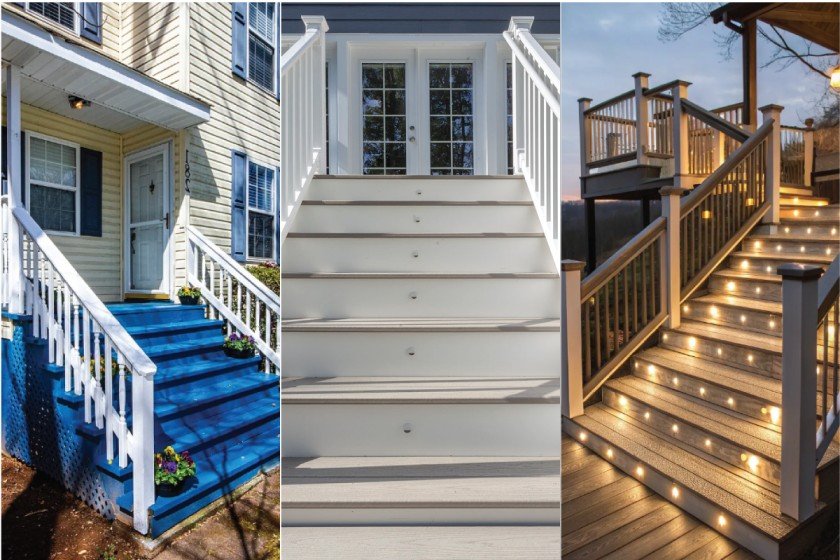Composite deck stairs can completely redefine the appeal and function of your backyard setup. With countless design directions to explore—from sleek lines to textured finishes—they’re a smart choice for adding modern flair and long-lasting structure. Whether you prefer something streamlined or striking, thoughtful stair design can tie your whole outdoor space together while making daily use smoother and safer.
1. Traditional Deck Stairs with a Classic Look
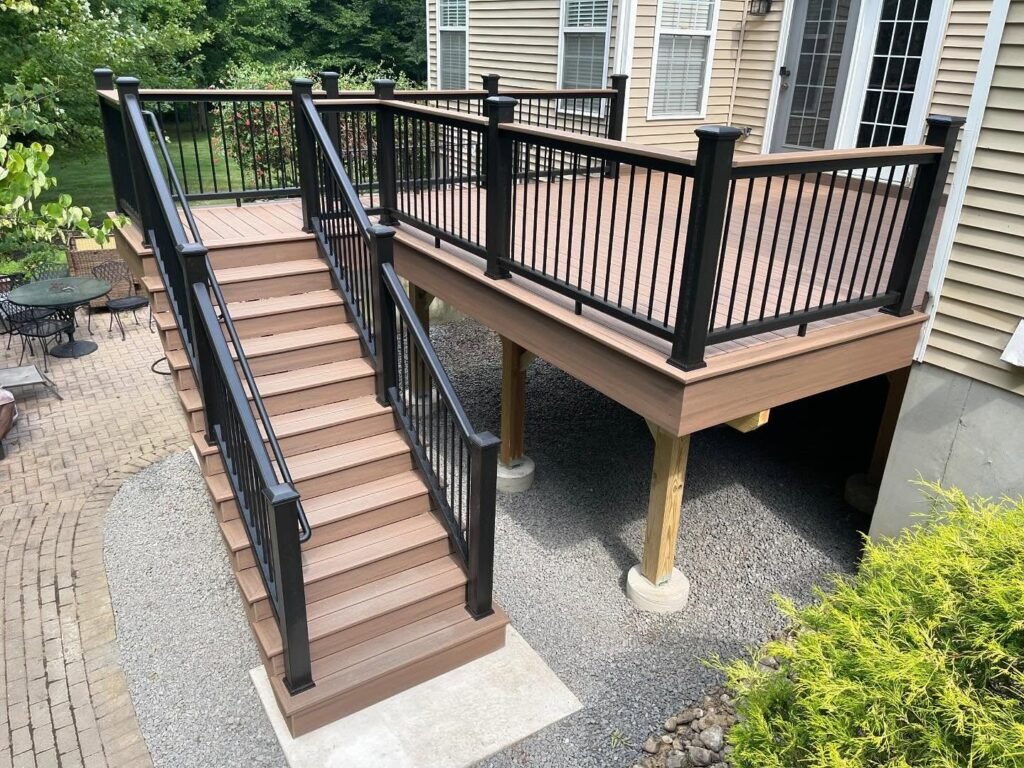
Lean into enduring design with traditional-style composite stairs that echo timeless craftsmanship. These stairs follow familiar proportions and lend a grounded, confident presence to your deck area. For those who favor tradition with a modern edge, combining standard stair layouts with composite materials offers a smart blend of reliability and visual consistency. On several of my projects, pairing these steps with coordinated railings has amplified the home’s architectural rhythm—subtle, yet striking.
Some practical picks to consider:
- Composite Decking Boards: A smart solution with the character of wood and the strength of composite, requiring little upkeep.
- Deck Railing Kits: These offer both protection and period-inspired styling, perfect for reinforcing the theme.
- Outdoor LED Step Lights: Add evening glow and extra visibility without drawing attention away from the stair design.
2. Multi-Entry Deck Stair Concepts for Flexible Flow
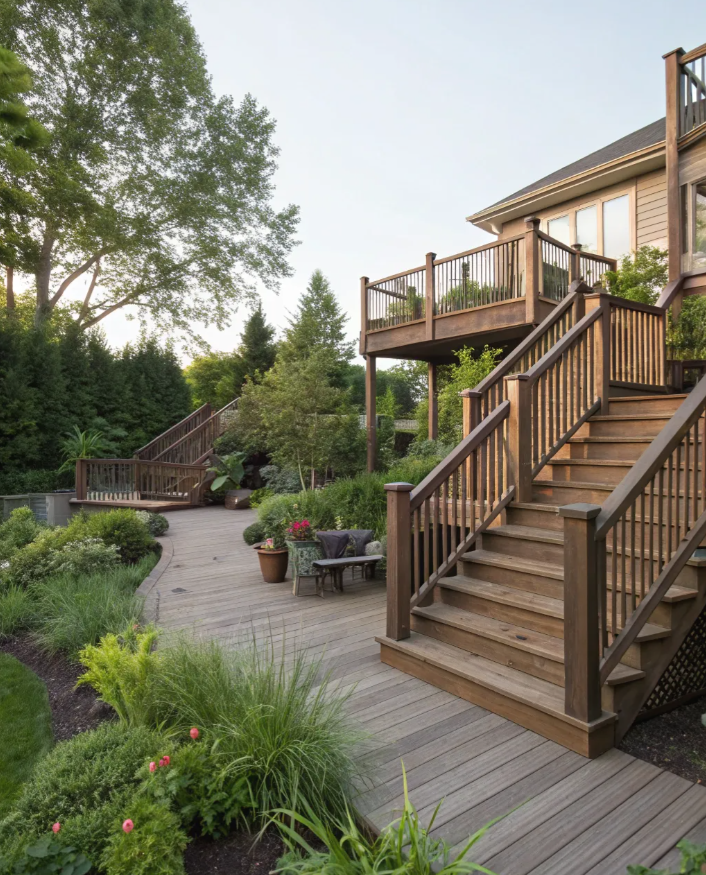
Adding multiple stairways to your composite deck isn’t just practical—it reshapes how people move through your outdoor setup. Whether you’re managing foot traffic from different zones in the yard or aiming to create a more open, connected space, additional access points can streamline use and boost visual balance. I’ve incorporated this layout in outdoor projects where decks function as a central gathering zone, and it’s made transitions feel far more natural.
Smart components to support this idea:
- Composite Deck Boards: Reliable underfoot and built to hold up over time, even with frequent use from several directions.
- Stair Railing Kits: Help frame each entrance while keeping safety top of mind—especially effective when dealing with different elevation points.
- Recessed Step Lighting: A clean way to outline all entry paths and improve visibility without overwhelming the design.
3. Open Riser Deck Stairs
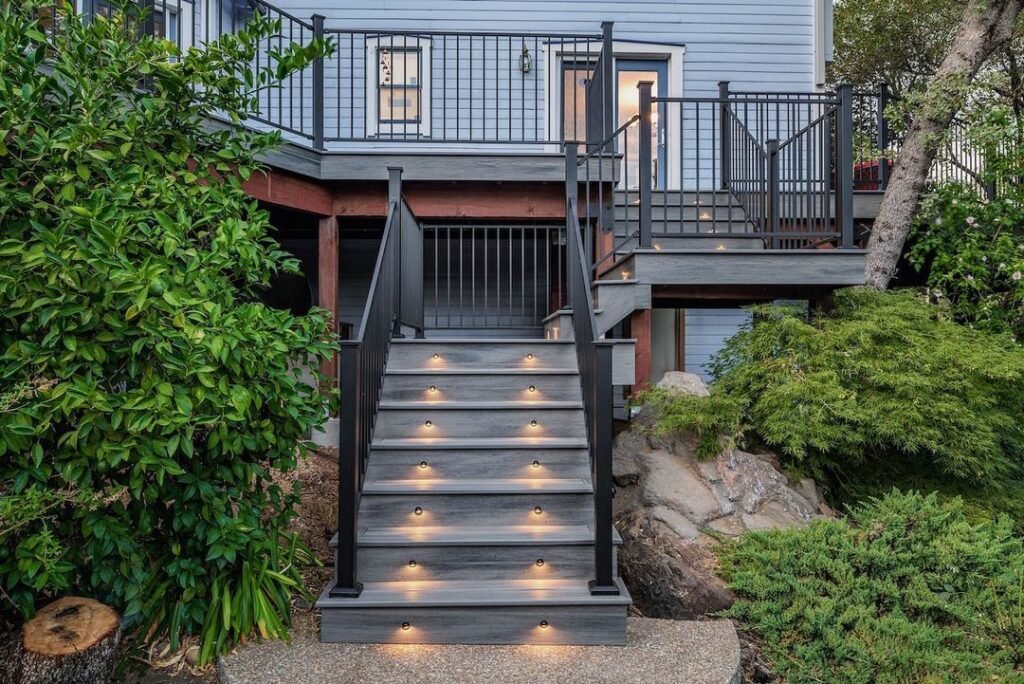
Open riser stairs introduce a breezy, weightless look that instantly modernizes your deck. Their clean spacing between steps adds visual lift, making the whole structure feel lighter and more spacious. Ideal for decks that face gardens or long views, this approach lets light pass through—reducing visual bulk and giving your outdoor space a sharp, uncluttered edge. I’ve used open risers in several minimalist builds, and the airy finish always draws attention without feeling forced.
Key elements that bring this to life:
- Composite Treads: These offer a smooth, consistent finish that aligns with the open design, while holding up well over time.
- Hidden Stringers or Side-Mounted Supports: Keep the lines sleek and unfussy—great for highlighting negative space.
- Under-Step Lighting: A subtle way to add depth after dusk without disrupting the architectural rhythm.
4. Concealed Step Designs That Quietly Define Minimalist Decks
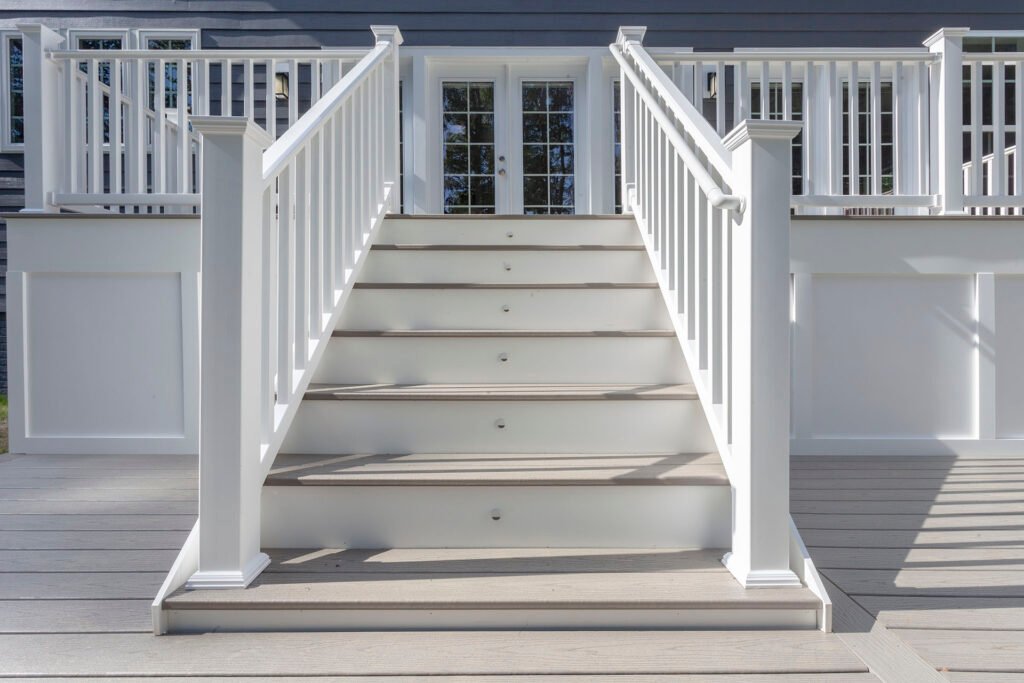
Hidden steps offer a subtle architectural move for decks built with restraint in mind. Rather than standing out, these stairs blend into the deck’s edge or skirt beneath planters, seating, or facades—resulting in a near-invisible transition from one level to another. This muted style works especially well in spaces where flow matters more than form. I’ve integrated this in tight outdoor areas and courtyard builds, where every detail had to work without pulling attention.
Thoughtful materials and features to consider:
- Flush-Mount Composite Boards: Keeps the stair face clean and seamless, with no protrusions or trim distractions.
- Integrated Lighting Channels: Slim LED strips can mark step edges discreetly, without breaking the visual calm.
- Deck Skirting or Built-In Seating: These can hide access points entirely until they’re needed—ideal for a low-profile look.
5. Deep Deck Steps That Invite You to Slow Down
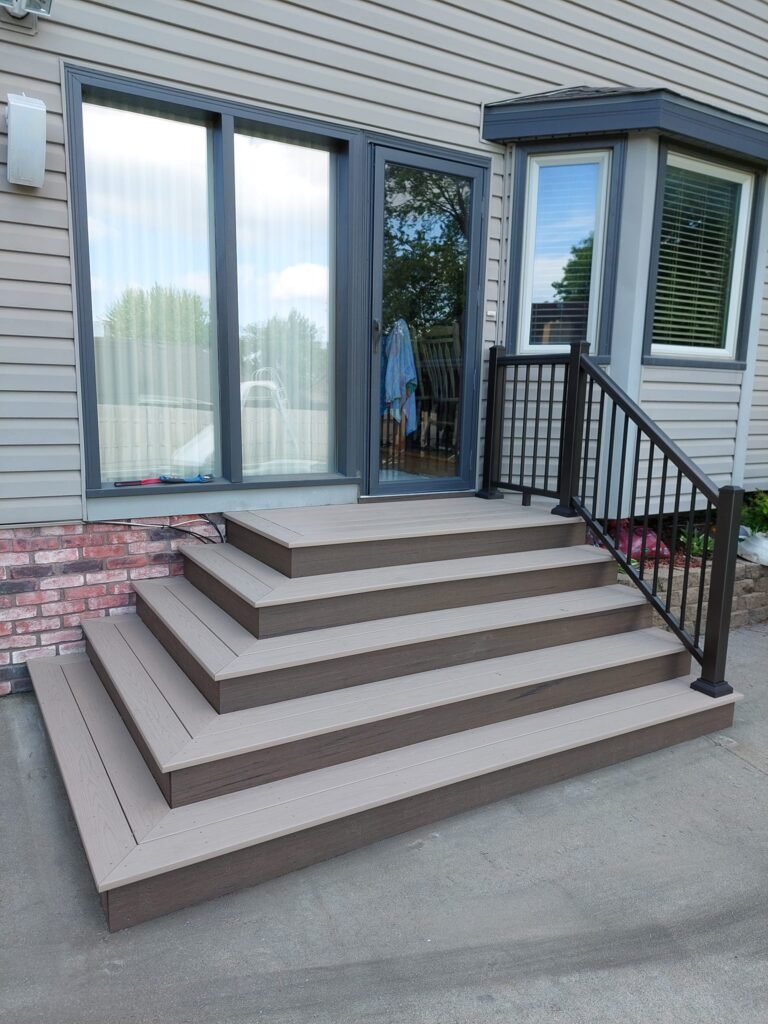
Deep steps shift the pace of movement—encouraging slower transitions and adding a sense of pause between levels. With generous tread depth and gentle rise, these stairs double as casual seating and offer more than a simple path up or down. I’ve found them especially useful in lounge-forward decks or poolside builds, where you want the structure to feel calm without trying too hard.
Features that support this slow-living approach:
- Extra-Wide Composite Boards: Offer stability and a soft look without fuss—great for barefoot lounging or setting down a drink.
- Low-Profile Lighting: Think subtle foot-level glow that marks the edges without interrupting the scene.
- Simple Railings or None at All (Where Safe): Keeps the lines open and unobstructed, reinforcing a more grounded, easygoing feel.
6. Matching Railings Harmony
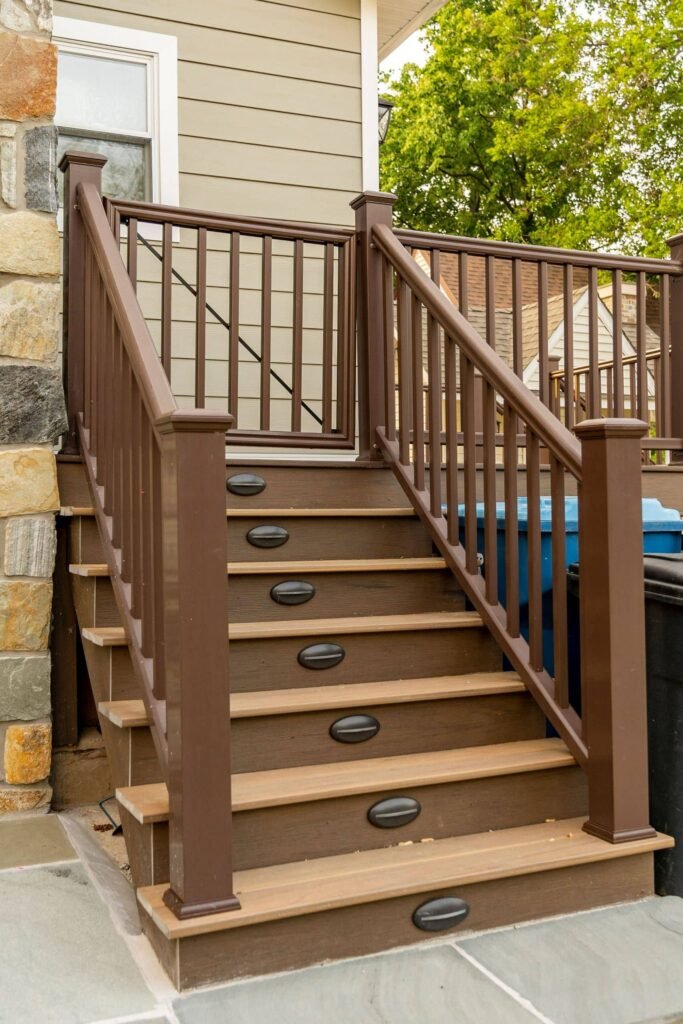
Matching railings with your steps might seem like a small detail—but it can shift the entire feel of your outdoor setup. A consistent look from top to bottom helps everything feel more intentional. Over time, I’ve noticed that this one decision often brings the entire deck together in a way that feels finished and thought-through. It’s a simple upgrade that works harder than it looks.
Handy picks to consider:
- Composite Deck Railing Kit – Includes everything you need to match your composite steps, making the overall look cleaner and more aligned.
- Outdoor Stair Railing Post – Built to last and shaped to blend well with your existing setup while adding strength where it counts.
- Deck Railing Balusters – Add both structure and style with balusters that work with your current materials without clashing.
7. Color Contrasts That Stand Out Where It Matters
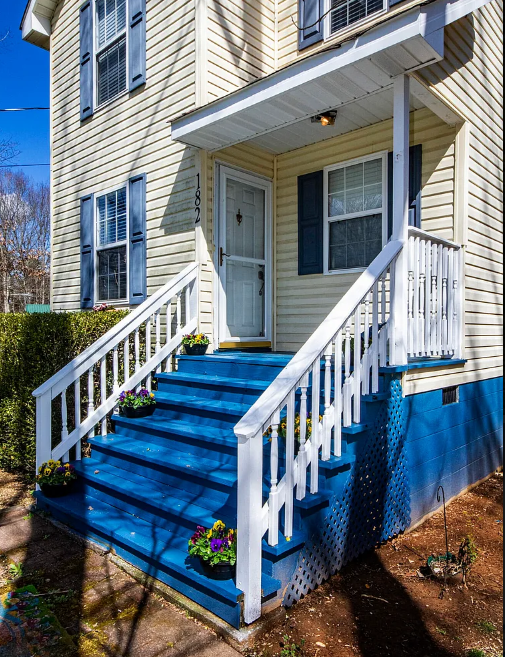
Strong contrast between your stairs, railings, and walking surfaces does more than catch the eye—it improves visibility and reduces missteps, especially in areas with varied lighting or changing conditions. I’ve often seen how adding a bolder color shift can make pathways feel clearer and safer without overcomplicating the design. It’s a simple but effective way to give form and function equal footing.
Helpful ideas to try:
- High-Contrast Deck Stair Treads – Make your steps easier to see with treads that clearly break from the surrounding deck tone.
- Two-Tone Railings – Choose a railing color that pops against your siding or decking to help guests orient themselves.
- Light-and-Dark Baluster Combinations – Mix finishes for a layered look that highlights depth and improves visibility from a distance.
8. Cable Railings That Keep Things Clean and Current
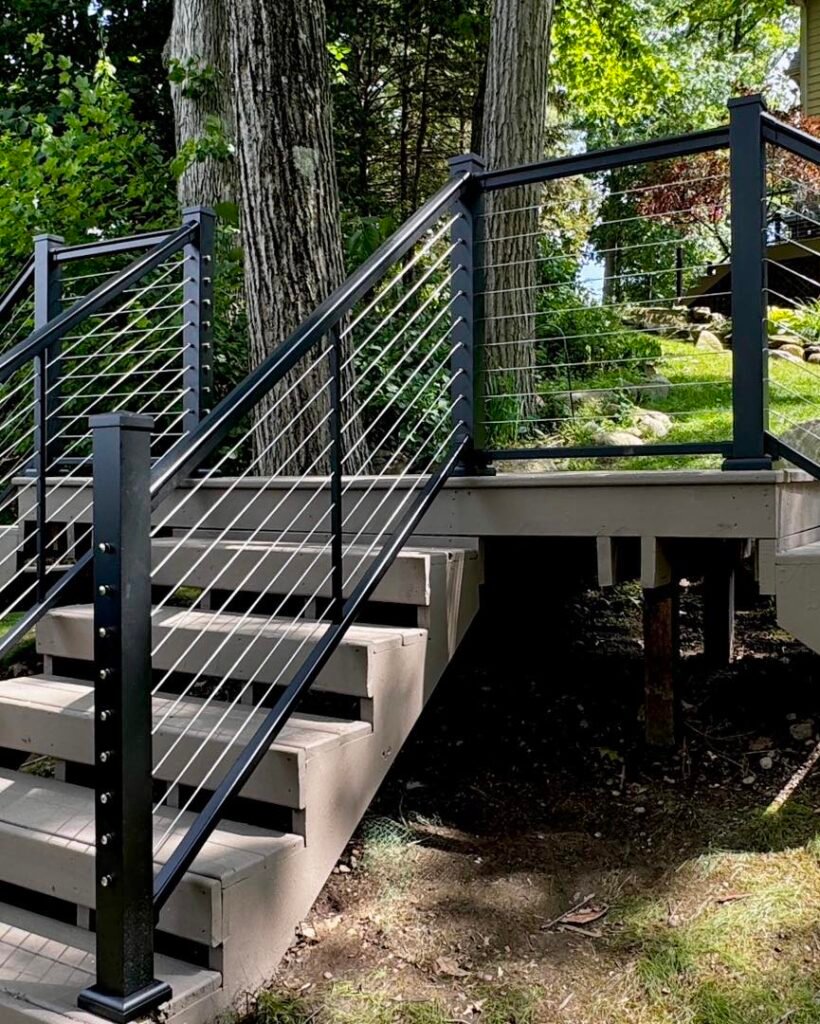
If your outdoor setup leans modern, cable railings are a solid match. Their slim profile and open lines help keep sightlines clear and the space feeling more open. I’ve used them on projects where less is more—and they always deliver that sleek, no-fuss edge. They work well with wood, metal, or composite and bring a subtle finish that doesn’t try too hard.
Smart picks to explore:
- Stainless Steel Cable Railing Kit – Minimal but strong, this kit keeps your view intact without adding bulk.
- Deck Cable Rail Posts – Slim posts built to hold tension while keeping the lines clean.
- Cable Railing Hardware Set – All the parts you need to get a tight, safe fit with a crisp finish.
9. Built-In Lighting That Sets the Mood Without the Fuss
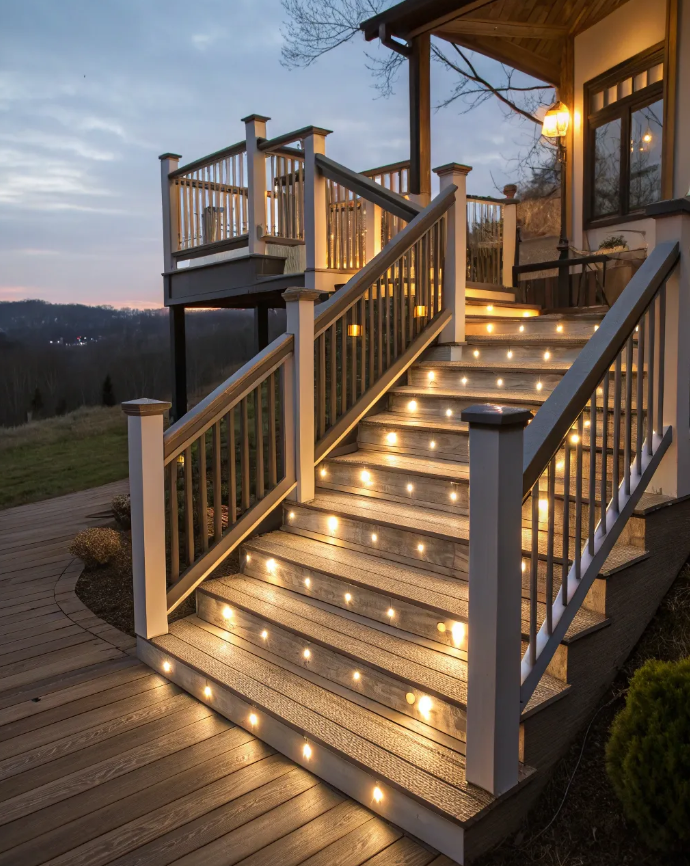
Good lighting can shift the atmosphere fast—and when it’s built right into your railings or steps, you get that effect without extra clutter. I’ve added integrated lights to several outdoor spaces, and each time, the result felt more inviting and intentional. Whether it’s for quiet evenings or safer walkways, these lighting setups pull double duty—function and feel, all in one move.
Ideas worth considering:
- LED Railing Light Strips – Subtle strips that run along handrails, adding just the right amount of glow without stealing focus.
- Post Cap Lights – Easy to install and great for defining deck edges or stair landings.
- Step Lighting Kits – Built to sit flush on your stairs, making nighttime movement easier while keeping things sleek.
10. Hidden Fasteners That Keep the Focus Where It Belongs
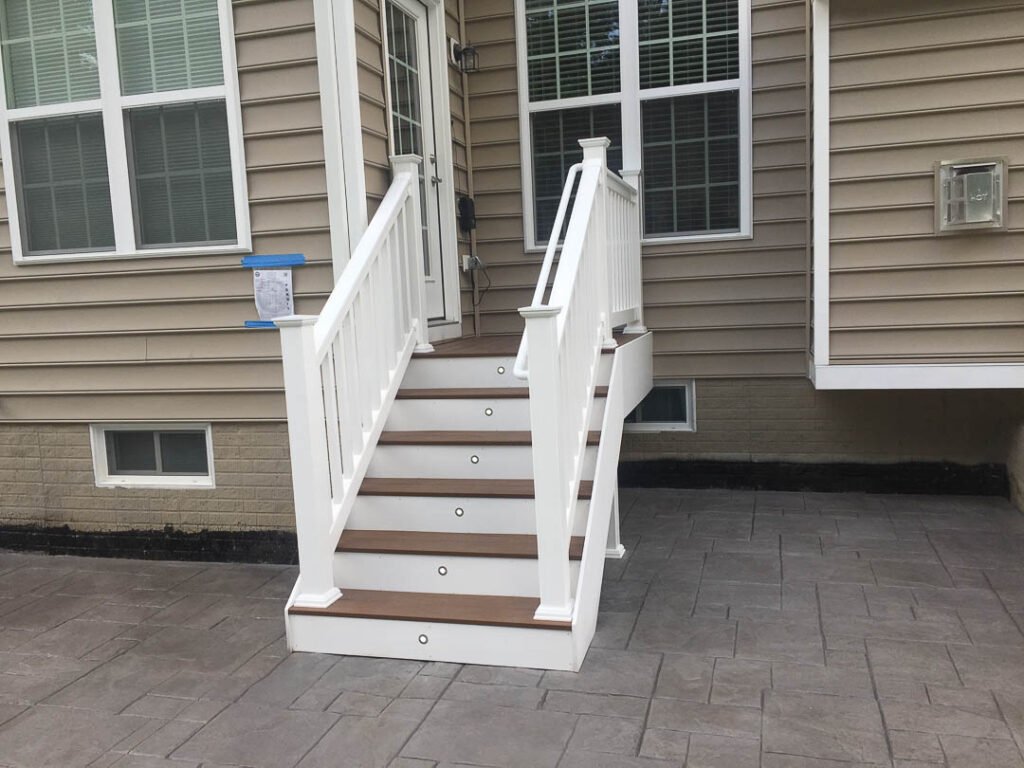
Screws and nails don’t need to steal the spotlight. Hidden fasteners keep surfaces smooth and clean, letting the material speak for itself. I’ve used them in builds where the goal was a more finished appearance without extra visual noise—and the difference is clear. They’re a small detail that quietly helps the whole setup feel more polished.
Ideas to look into:
- Deck Hidden Fastener Kit – A go-to option for clean lines between boards with no visible gaps or hardware.
- Concealed Clip Systems – Simple to install and compatible with most composite decking, these clips hold tight without sticking out.
- Hidden Screw Anchors – These create a secure hold beneath the surface, keeping everything in place without disrupting the look.
11. Closed Risers That Keep Every Step Clear and Confident
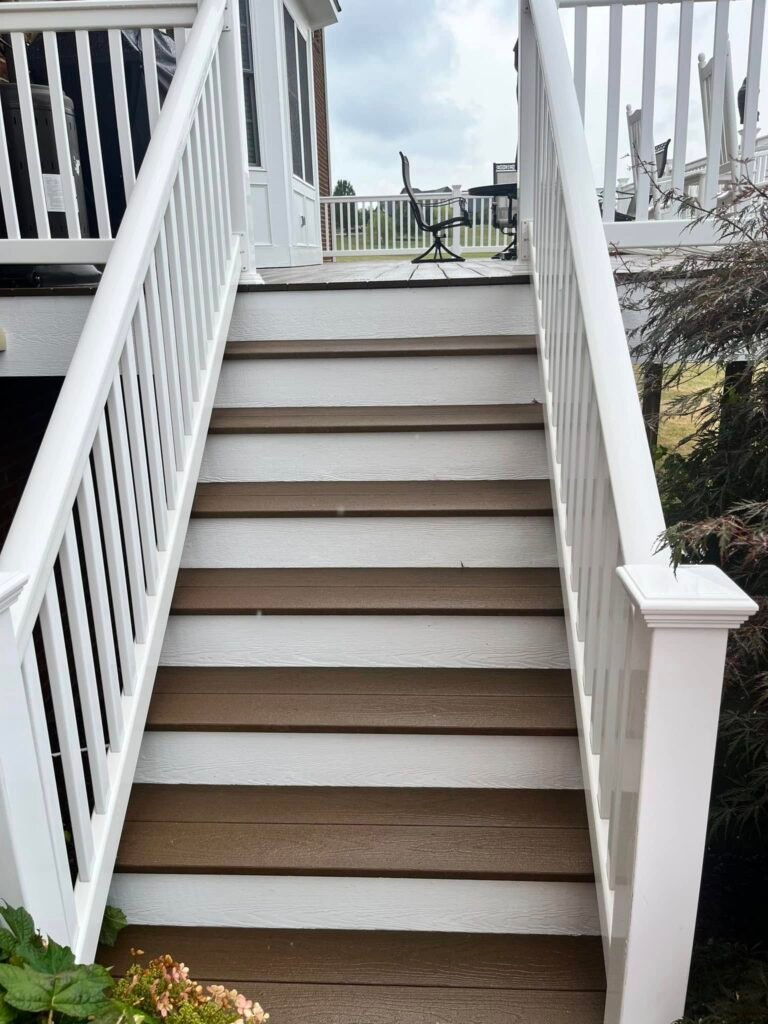
Open risers might look light and airy, but they can create gaps that trip up the eye—or the foot. Closed risers offer a more secure feel, especially for families, kids, or anyone who prefers extra stability underfoot. I’ve added them to many stair builds where safety needed to meet simplicity, and the result always feels more grounded. They’re subtle, but they do a lot of work behind the scenes.
Options worth checking out:
- Composite Closed Riser Boards – Pre-cut to fit standard steps, these help block out gaps while matching your decking.
- Pressure-Treated Wood Risers – A solid pick for wood builds where durability and structure matter.
- Color-Matched Stair Risers – Blend seamlessly with your setup while reinforcing each step’s visibility and depth.

